124 DVD-A / L. v. Beethoven: String Quartets · Vol. 1 of 4 op. 18 no. 1 – 6
Description
"To perform quartets with four instruments, all of equal values: that was an intention of Beethoven’s which the Auryn Quartet has consistently put into practice. Supported by recording technology which places each instrument at one speaker, the Auryn Quartet has successfully produced an interpretation of unparalleled transparency." (Stereo)
This DVD contains the complete music twice: first in Real Surround Sound (tracks 1 - 16) and then in Moving Real Surround Sound (tracks 17 - 32). The composition and interpretation are identical and unaltered as always.
2 reviews for 124 DVD-A / L. v. Beethoven: String Quartets · Vol. 1 of 4 op. 18 no. 1 – 6
You must be logged in to post a review.

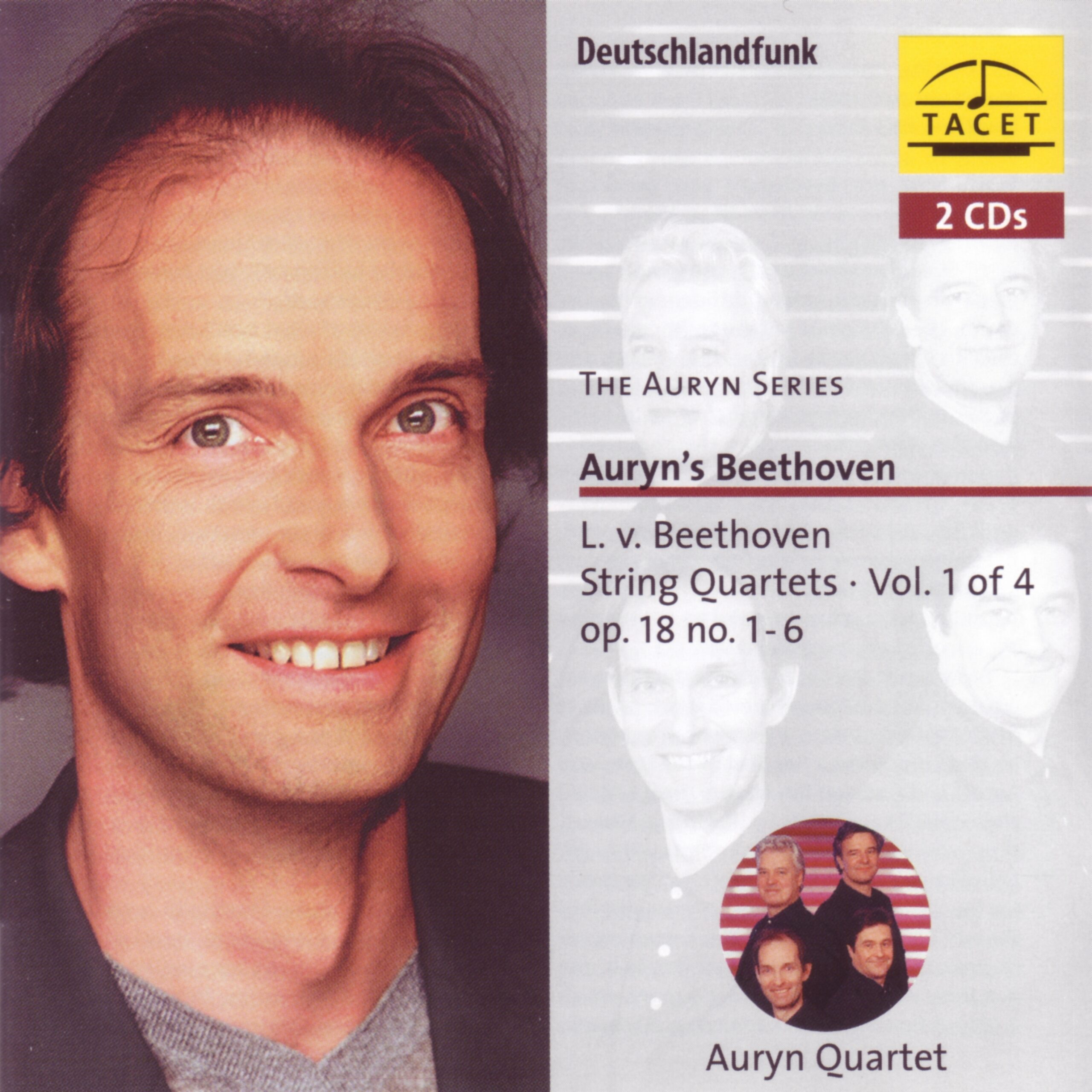
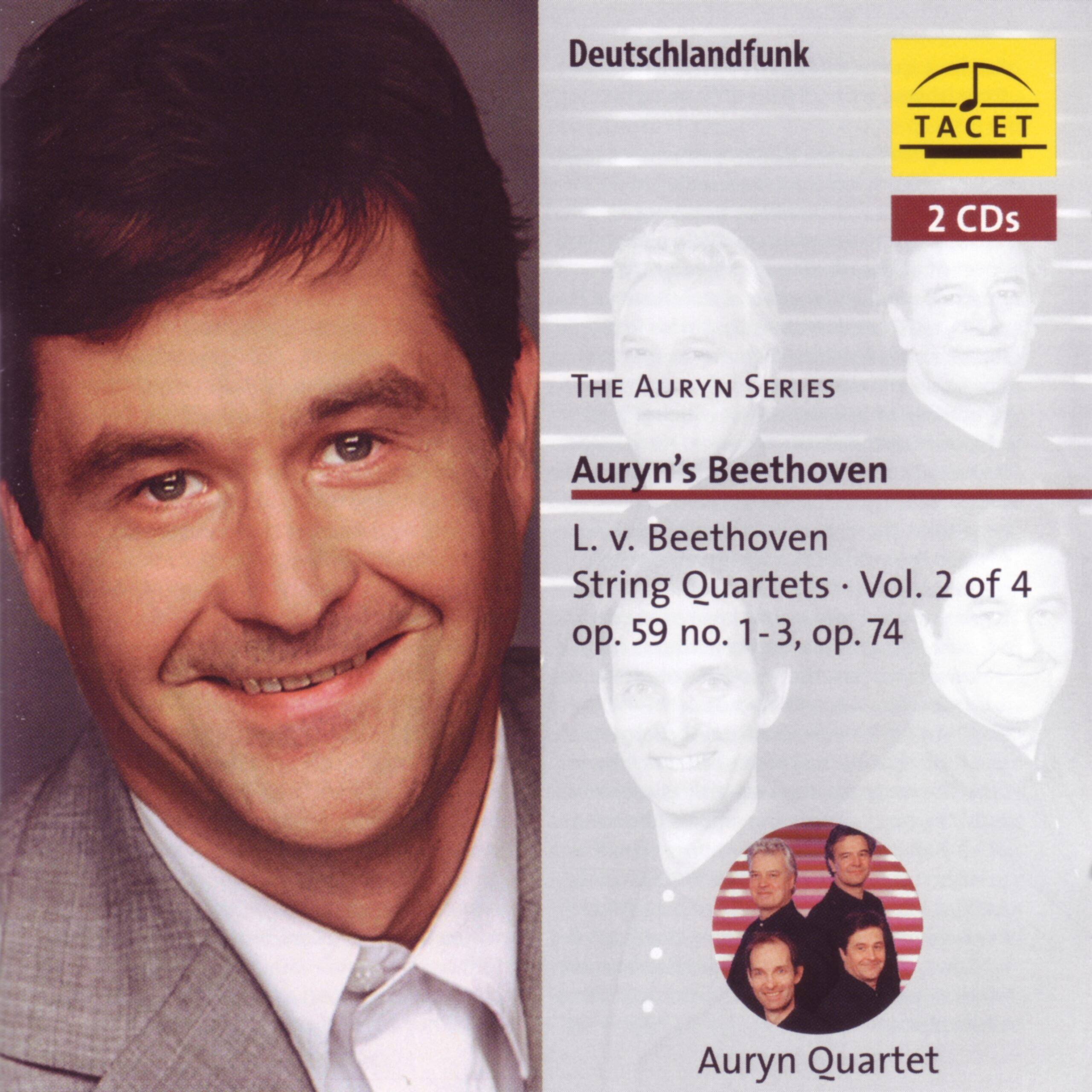
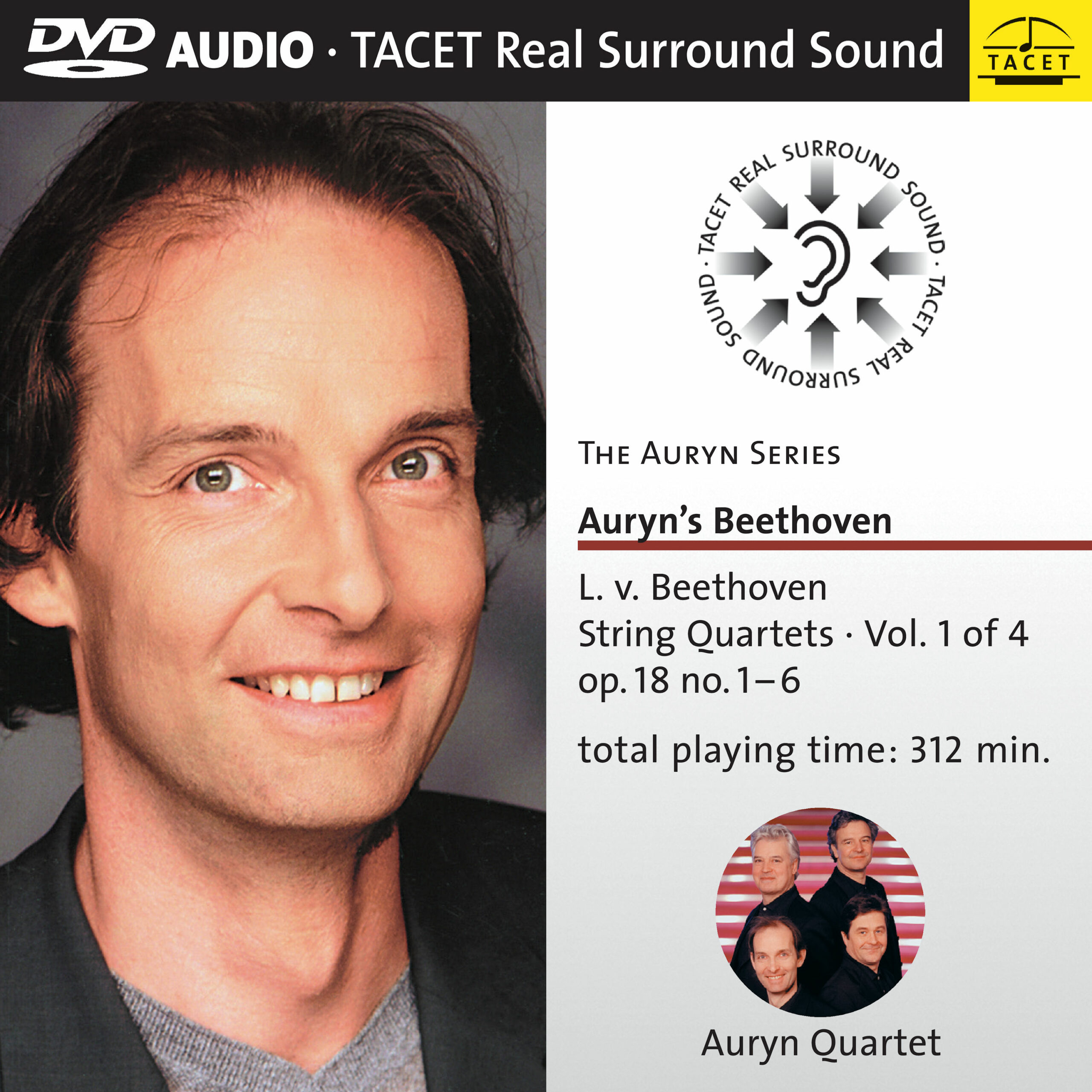
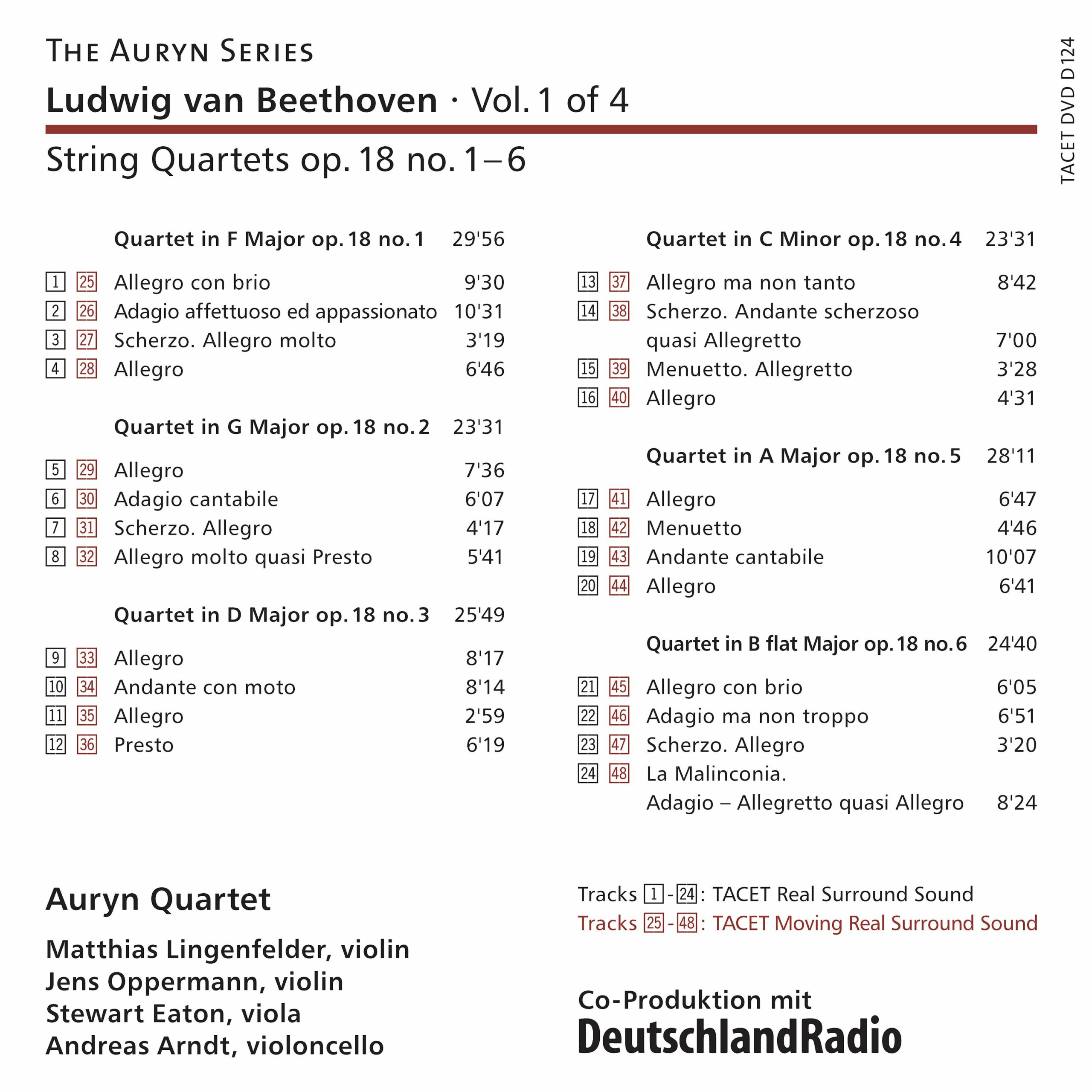
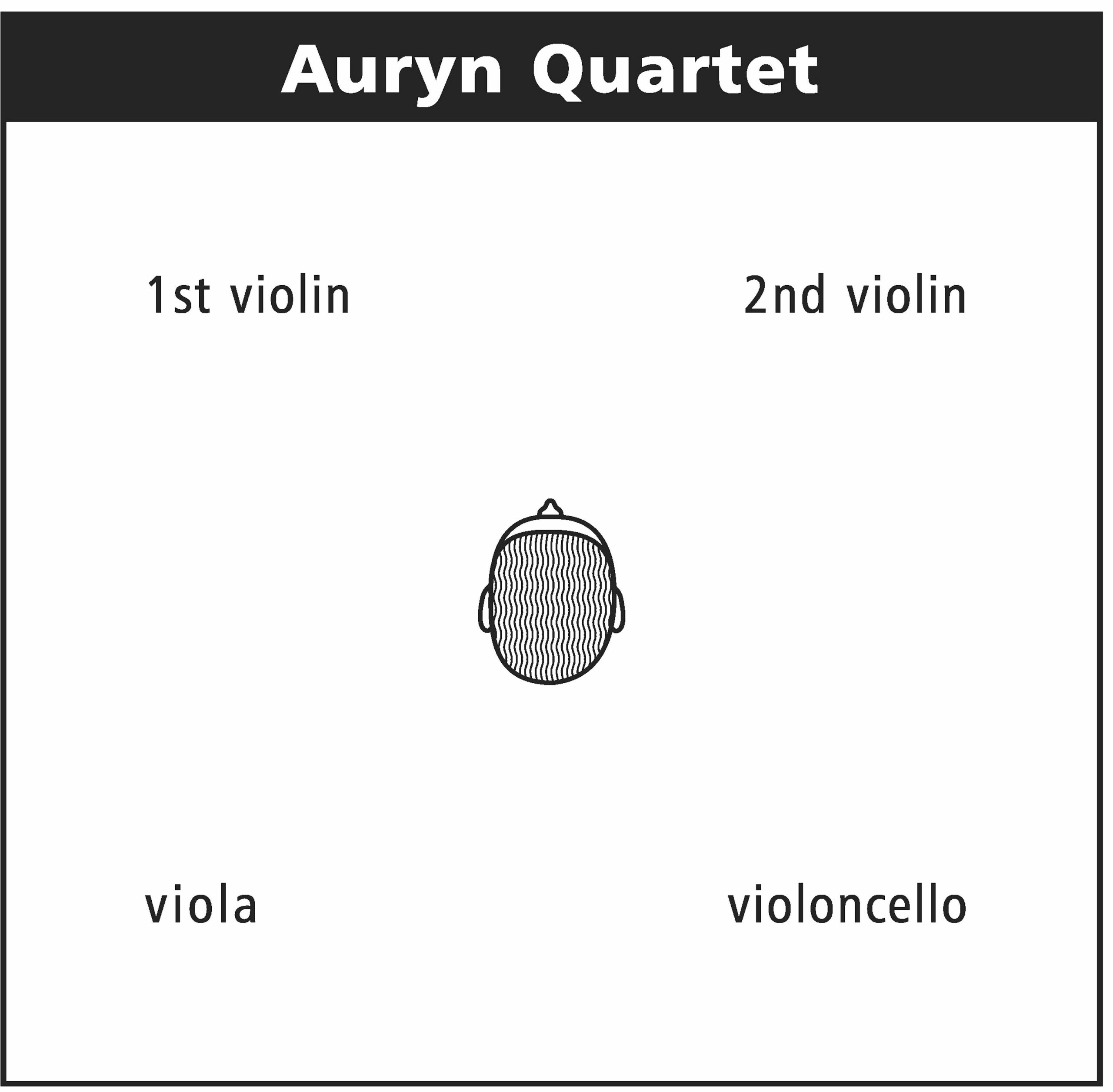
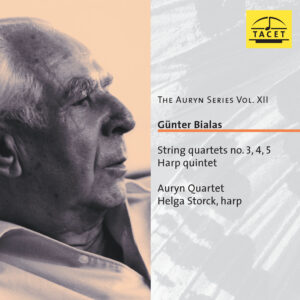
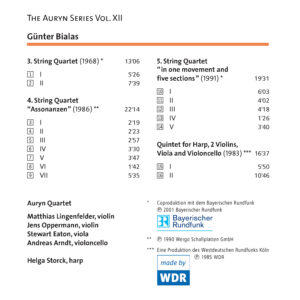
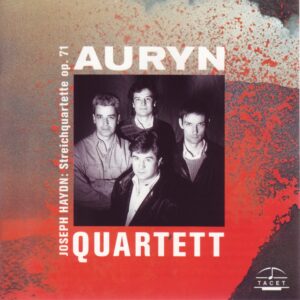
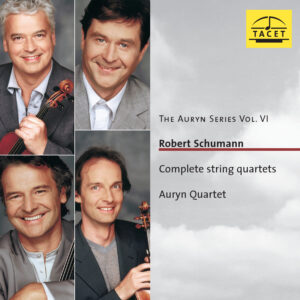
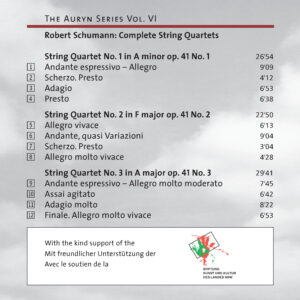
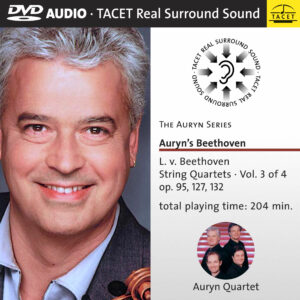
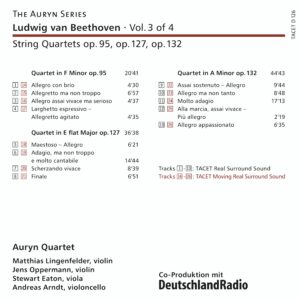
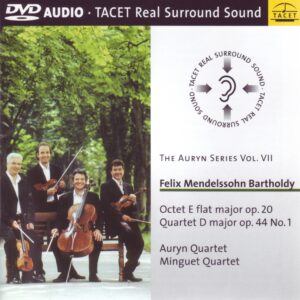
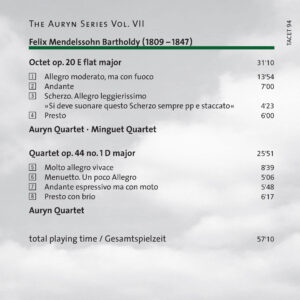
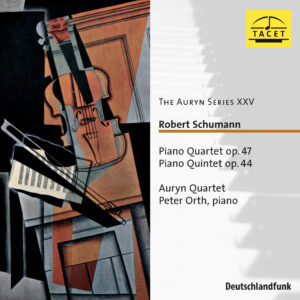
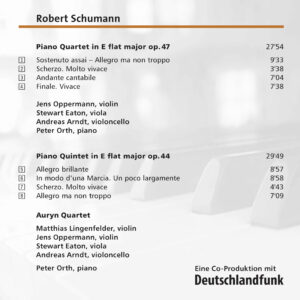
Audiophile Audition –
312 minutes on one disc!
Two versions of all six quartets, including one with the players moving around...
Now this is making use of a DVD-Audio feature with which SACD cannot compete - the length of recording time on a single disc. All six of the close-to-half-hour- length string quartets of Beethoven are here in two different complete versions. Tacet is known for their highly individual surround presentation they call Real Surround Sound. Used mostly with chamber music, it places each instrument in a trio, quartet or quintet on a separate channel at its individual speaker. So in this case the first and second violins of the quartet are located at the left and right front speakers respectively, the viola at the left surround speaker and the cello at the right surround (the center is not used). The feeling for the listener in the sweet spot is as if one was participating in the performance oneself. The music itself is unaltered from the score.
Because of the greater storage capacity of the DVD-A, all six quartets can be presented first in this stationary Real Surround Sound format, and then all six can be repeated again in Moving Real Surround Sound. Now in addition to the grouping of the players around the listener, the players can also move around “when the occasion requires.” Usually movement of the players within a movement is avoided. There are four movements in each quartet of Op. 18 and four channels being used. Therefore there are 24 possible combinations of changing position. In the first movement the first violin, for example, is at the left front. For the second movement it moves to the right front, for the third to the right rear, and so forth thru the quartets. (The extended development section of one of the late quartets - to be released soon - is seen by the producer as a long journey thru a new world, so he has the four players move in almost a complete circle during the movement, and then back to home at the end.)
The nice feature is that if all this motion makes you seasick, you can just skip the second half of the lengthy disc due to its huge storage capacity. There are two sets of track numbers listed for each movement: the first, for example, is both Track 1 and Track 25.
The works come from a time when Beethoven wrote a friend that he has only just learnt how to write quartets properly. Well, they are more that just proper. Using the tradition of Haydn and Mozart he created unique Beethovenian works that have more individual features of their own than do those of the earlier composers.
As to the quality of interpretation, I must confess to not being a frequent listener to quartets except for those of Debussy, Ravel and Faure. However, I cannot fault the style of the Auryn Quartet, which has been around for 22 years. They don’t dig in harshly as do some quartet players, their phrasing is excellent, and Tacet has captured the sound of each player with great clarity - and more separation than any other label, due to their unique miking procedures!
I have not been critical of Tacet’s approach as some other reviewers have been. In fact, I have found that either the original Real Surround Sound or the version on steroids can aid the listener to these works who might not be that familiar with the quartets. It highlights the various voices and themes in the music by the separation of the instruments, making their variation and development clearer. A visual metaphor would be if while looking at the complete score the four different instrumental lines would light up in different colors.
John Sunier
Stereo –
Creating quartets with four equal instruments—this was Beethoven’s intention, and the Auryn Quartet has consistently realized it. Supported by recording technology that places each instrument in its own speaker, they have achieved an interpretation unmatched in transparency. Outstanding musicality and technical precision are, of course, guaranteed with this ensemble. Small side effect: The DVD is an ideal system tester—if the balance between front and rear speakers isn’t right, check your hi-fi setup!
Philipp Kelm